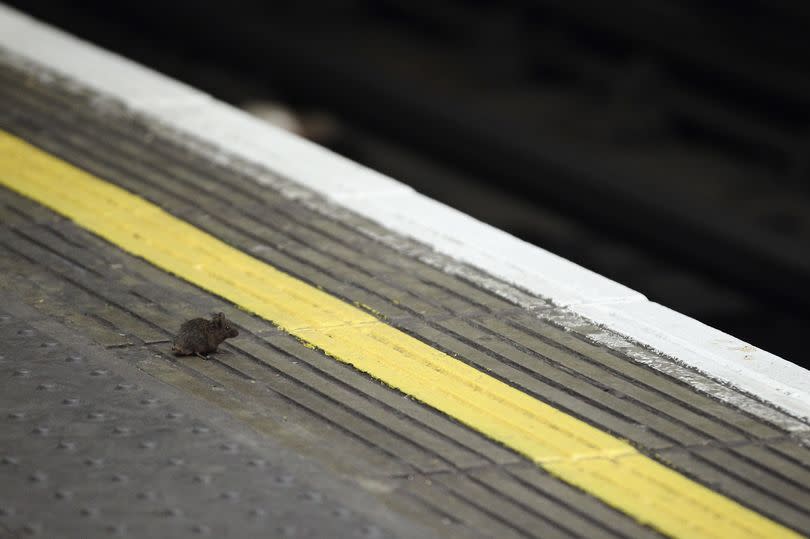Mice on London Underground - from losing their tails to commuters warned to tuck trousers into socks

We've all experienced it, travelling home after a night out and as you turn down the tunnel to reach the Tube platform you hear a shriek. Someone's spotted a mouse down on the tracks and it becomes the centre of attention as it scurries out of sight.
This moment of London life has even been prize worthy. In 2020 the Wildlife Photographer of the Year competition People's Choice Award was awarded to "Station Squabble", a picture of two mice appearing to battle it out on a London Underground platform.
Tube mice live on the Underground network and many of us have see, usually out of the corner our eye. Although some people can find mice frightening, the Tube mice tend to keep to themselves. But since we share a transport network with them, how much do you really know about them?
READ MORE: The Tube stations worst hit by 'staggering rise' in lift closures due to 'lack of trained staff'

1. There are more Tube mice than people living in Croydon
An estimated 500,000 tiny mice live in the network of tunnels on the London Underground. That's more than the population of even London's biggest borough, Croydon, where 392,224 people lived in 2022 according to Statistica.
In response to a Freedom of Information (FOI) request in April 2019, Transport for London (TfL) said: "It is estimated that there are half a million mice living across the London Underground network. Mice can be found in many environments such as forests and grasslands, or any manmade structure where they can find warmth, shelter, and food.
"They are not unique to the London Underground and are found on other transport systems around the world. Mice can be seen at any time of the day across the entire network, however mice are nocturnal so in general are more active at night.
"As with most vermin, mice can spread disease and cause damage to property. Regular pest control and management is carried out across the network. We make every effort to eradicate vermin from our properties, but littering and unwanted food and water sources nearby pose an ongoing challenge. We rely heavily on neighbouring properties and customers to help us manage this issue by not discarding food sources and litter near our tracks or at stations."
2. They are not the only known animals to live in the tunnels
The Underground is not the best habitat you can imagine, with an abject lack of sunlight or vegetation. Which is why it might surprise you to learn there are other animals that call the network home.
There is a unique species of mosquito on the Underground which started life in the tunnels during the Second World War, when thousands would shelter in the tunnels. It is called Culex pipiens molestus and it has a taste for human blood.
3. The mice at Farringdon are particularly vicious
The City can be a famously ruthless place to work, but also to commute from it seems. In 2012 a message was written on Farringdon Station's noticeboard advising commuters to tuck their trousers into their socks after a spate of rogue mice attacks.
4. They had a children's TV show made about them
In the 80s, an animated children's series called Tube Mice was aired, detailing the lives of four mice living in the tunnels of Oxford Circus station. The series aired on Children's ITV as well as Nickelodeon and Tiny Pop in the UK and on local channels in South Africa, Germany, Hungary, Singapore and New Zealand.
5. They also like to dance
A battle between two mice may have made them (and photographer Sam Rowley) famous, but during quarantine two mice decided there was another way to live. Trading boxing gloves for dancing shoes, two mice were filmed foxtrotting around an empty platform at Notting Hill Gate while Londoners avoided the Tube during the lockdown.
6. They are likely to be deaf or have no tails
Unfortunately there are hazards associated with the habitat they live in. Tube mice have been found to have an increased likelihood of having their tails cut off or losing their hearing as a result of the Tube trains hurtling through the tunnels. Those of us who have sat through the screeches of the Jubilee line in particular will empathise.
Our London Underground newsletter brings you the latest travel updates to help you survive your commute - as well as a weekly dose of Tube trivia! You can sign up HERE.

 Yahoo News
Yahoo News 
